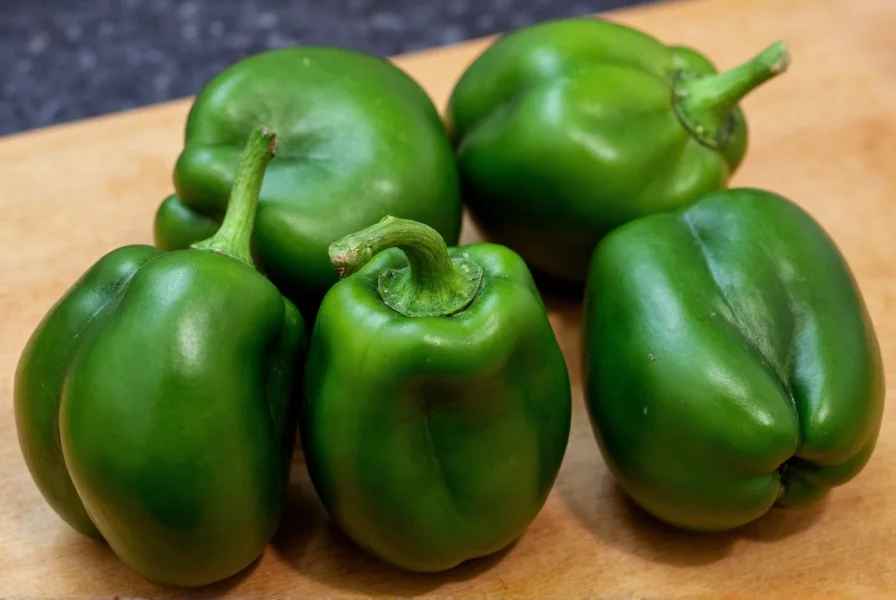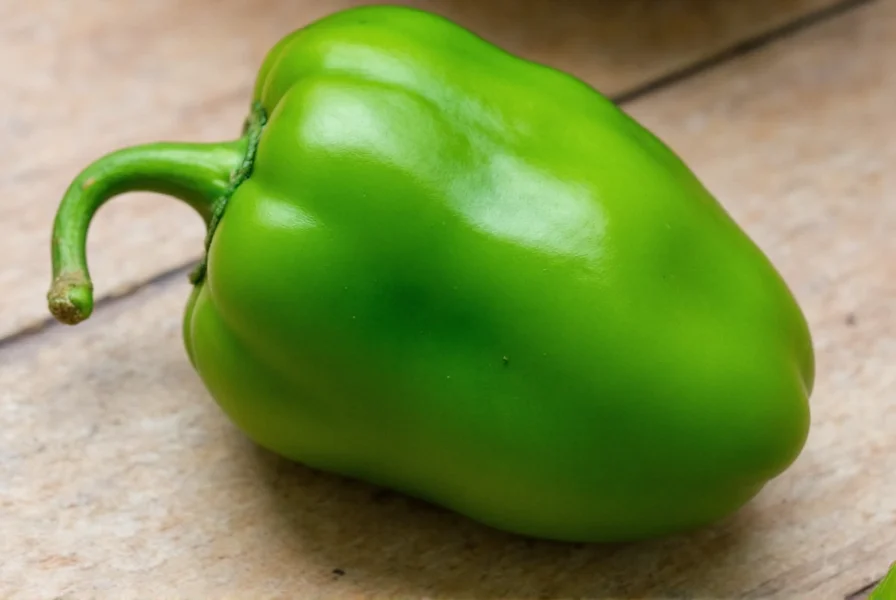When exploring what is a poblano chile pepper, it's essential to understand this versatile ingredient's unique characteristics that have made it a staple in kitchens across Mexico and beyond. Unlike many chile varieties that are primarily valued for their heat, the poblano offers a complex flavor profile with only moderate spiciness, making it accessible to a wide range of palates while still delivering authentic Mexican culinary experiences.
Physical Characteristics of Poblano Peppers
Poblano peppers typically measure 4-6 inches in length and 2-3 inches in width, featuring a distinctive heart-shaped or teardrop form with thick, glossy skin. When immature, they appear dark green, but as they mature on the vine, they transform to a deep, rich red. The thick walls make them ideal for stuffing, while their relatively large size distinguishes them from smaller chile varieties like serranos or jalapeños.

Flavor Profile and Heat Level
Understanding what does a poblano pepper taste like requires recognizing its nuanced flavor profile. Poblanos deliver an earthy, slightly fruity taste with subtle notes of grass and bell pepper, but with more complexity. On the Scoville scale, they register between 1,000-2,000 heat units, placing them in the mild to medium category—significantly milder than jalapeños (2,500-8,000 units) but with more kick than bell peppers (0 units).
| Chile Variety | Scoville Heat Units | Flavor Profile |
|---|---|---|
| Poblano | 1,000-2,000 | Earthy, slightly fruity, grassy notes |
| Jalapeño | 2,500-8,000 | Grassy, bright, moderately spicy |
| Bell Pepper | 0 | Sweet, vegetal, no heat |
| Serrano | 10,000-23,000 | Sharp, bright, significantly hotter |
Origin and Cultural Significance
The poblano pepper (chile poblano in Spanish) originated in the state of Puebla, Mexico—hence its name. Historical records indicate its cultivation dates back to pre-Columbian times, with indigenous peoples incorporating it into their diets long before European contact. Unlike many chile varieties that spread globally after the Columbian Exchange, the poblano remained primarily within Mexican culinary traditions until relatively recently.
When examining poblano pepper vs bell pepper, the cultural context matters significantly. While bell peppers were developed specifically for zero heat, poblanos evolved as a versatile cooking pepper that provides flavor without overwhelming heat—making them indispensable in traditional Mexican dishes where balance is paramount.
Culinary Applications
Chefs value poblano peppers for their adaptability across cooking techniques. When roasted and peeled, they develop a smoky sweetness perfect for rajas con crema (strips in cream sauce) or the iconic chiles en nogada (stuffed peppers in walnut sauce). Fresh poblanos work well in salsas, while dried versions (called anchos) form the base of many mole sauces.
For home cooks wondering how hot is a poblano pepper when cooking, the heat can vary based on growing conditions and seed lineage. Removing the seeds and white membranes significantly reduces the heat while preserving flavor—making them accessible even for those sensitive to spice.
Growing Poblano Peppers
Gardeners interested in growing poblano peppers at home should note they require 65-80 days to maturity and prefer warm temperatures (70-85°F). Unlike some chile varieties, poblanos thrive in containers, making them suitable for patio gardening. The plants typically reach 24-30 inches in height and produce 6-8 peppers per plant under optimal conditions.
When harvesting, pick poblanos while still dark green for fresh eating, or allow them to ripen to red for drying into anchos. The thick walls make them more resistant to pests than thinner-walled varieties, though they remain susceptible to common pepper diseases like bacterial spot.
Nutritional Benefits
Examining poblano pepper nutritional benefits reveals they're rich in vitamin C (providing 120% of daily value per pepper), vitamin A, and dietary fiber. They also contain capsaicinoids, compounds associated with metabolic benefits and pain relief. With only 20 calories per pepper, they offer significant nutritional value without adding substantial calories to dishes.
Storage and Preservation Techniques
For those wondering where to buy poblano peppers, they're increasingly available in mainstream supermarkets year-round, though peak season runs from late summer through fall. To extend their shelf life (typically 7-10 days refrigerated), consider these preservation methods:
- Freezing: Roast, peel, and freeze in airtight containers for up to 6 months
- Drying: Transform mature red poblanos into anchos for use in sauces
- Pickling: Create tangy pickled poblanos for sandwiches and salads
- Oil-packing: Preserve roasted peppers in olive oil for ready-to-use ingredients
Common Substitutions
When you can't find poblanos, understanding appropriate substitutes is crucial. For substitute for poblano pepper scenarios:
- Green bell peppers: For zero-heat applications, though lacking complexity
- Anaheim peppers: Similar mild heat with slightly different flavor profile
- Cubanelle peppers: Closer in shape but milder in flavor
- Combination approach: Mix bell peppers with a small amount of jalapeño for balanced flavor and heat
Signature Dishes Featuring Poblano Peppers
No exploration of what is a poblano chile pepper would be complete without highlighting traditional preparations:
- Chiles en Nogada: Poblanos stuffed with picadillo, topped with walnut cream sauce and pomegranate seeds—Mexico's patriotic dish
- Rajas con Crema: Strips of roasted poblano in creamy sauce, often with onions and cheese
- Chile Relleno: Classic stuffed and battered preparation, frequently with cheese filling
- Mole Poblano: Complex sauce featuring dried poblanos (anchos) among multiple chiles

Practical Cooking Tips
When working with fresh poblanos, follow these professional techniques:
- Always roast over open flame or under broiler to loosen the tough skin
- Place in a covered bowl after roasting to steam and further loosen skin
- Peel under running water to remove all skin remnants
- For consistent heat, remove all seeds and white membranes
- When substituting dried anchos for fresh poblanos, use 1 dried ancho per 2 fresh poblanos
Frequently Asked Questions
Are poblano peppers and pasilla peppers the same?
No, poblano peppers and pasilla peppers are different. Poblanos are fresh, large, heart-shaped peppers that turn from green to red. When dried, poblanos become anchos. Pasilla peppers are actually dried chilaca peppers, which are long, thin, and dark brown when dried. The confusion often arises because "pasilla" means "little raisin" and refers to the dried form, while fresh poblanos are sometimes mistakenly called pasillas in some regions.
Can I eat poblano peppers raw?
Yes, you can eat poblano peppers raw, though many prefer them roasted. Raw poblanos have a slightly bitter, grassy flavor with crisp texture. Roasting mellows their bitterness and enhances their natural sweetness. If eating raw, choose younger, greener poblanos which tend to be milder. Always remove seeds and membranes if you're sensitive to heat, as these contain most of the capsaicin.
Why do some poblano peppers taste hotter than others?
Poblano heat varies due to several factors: growing conditions (drier, hotter climates produce hotter peppers), maturity (red, mature poblanos are often hotter than green ones), and genetics. The amount of capsaicin concentrates in the seeds and white membranes, so peppers with more developed seed structures will be hotter. Stress factors like inconsistent watering can also increase heat levels. This natural variation explains why you might encounter how hot is a poblano pepper experiences that differ from one pepper to the next.
What's the difference between chile poblano and poblano pepper?
There is no difference between chile poblano and poblano pepper—they refer to the same vegetable. "Chile" is the Spanish word for pepper, so "chile poblano" literally means "pepper from Puebla" (the Mexican state where it originated). In English-speaking contexts, it's commonly called simply "poblano pepper." The term "chile" specifically refers to the fruit of the Capsicum plant in Mexican and Southwestern US cuisine, distinguishing it from bell peppers which aren't typically called chiles.











 浙公网安备
33010002000092号
浙公网安备
33010002000092号 浙B2-20120091-4
浙B2-20120091-4